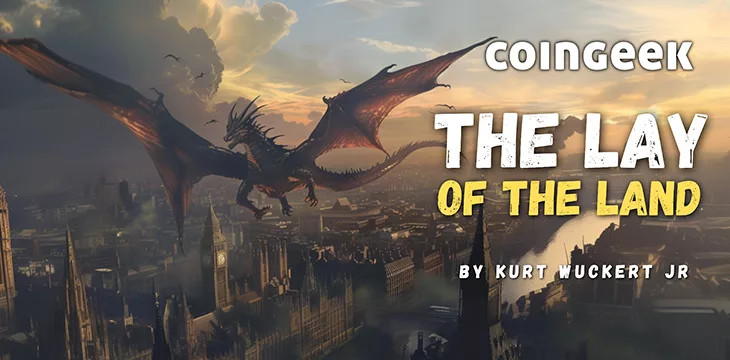|
Getting your Trinity Audio player ready...
|
For a little over four years now, I have written a more personal article on the eve of the big blockchain events where I make a few predictions and revisit the lay of the land. Initially, they were CoinGeek Conferences, then things got changed up in Dubai a couple of years ago, and now there has been a new line drawn in the sand to formally create the London Blockchain Conference in 2023. We are mere days away from the second annual “LBC,” and I’m excited.
Why?
Well, 2024 has been a very different year in many ways. But I think the landscape is so drastically different, that it is worth pointing out why the changes in personnel and the economy as a whole are a net good.
ABLA
One notable chess piece on the landscape is the resurgence of discussion on big blocks in general. Fueled by Roger Ver’s Hijacking Bitcoin book and renewed discussion about BCH’s place in the Bitcoin Civil War, there is some pickup in discussions. The BCH developers have also successfully hard-forked the network to add in an “Adjustable Block-size Limit Algorithm” or “ABLA” that is designed to dynamically adjust the block size limit up or down based on an exponential moving average of needed space in blocks.
The BCH community seems to think this is some kind of massive improvement because it alleges to take away the risk for future politicization of the issue, and they think it means the network can just scale as needed into the foreseeable future.
Well, it can, as long as BCH isn’t adopted too quickly. There are two things I find very curious about the entire concept of ABLA:
1: There is absolutely no need for an algorithm like this. Node operators are people, and if block size was merely a policy instead of consensus (like it is in BSV), it could be adjusted by a human being acting as a rational economic actor when needed. Instead, ABLA only allows BCH’s block size to grow by 2X total per year. So that means if BCH has more demand than that, the BCH network will absolutely require another hard fork in order to not behave, like BTC does on high traffic days—with high fees and unpredictable settlement times. Plus 2X growth per year reminds me of the original Blockstream proposal to raise the block size limit by 2X per year that never happened…
2: Block size limit does not fix everything. Since splitting away from BCH over five years ago, the R&D that has gone into scaling Bitcoin has been tremendously expensive and an incredible amount of hard work spread across multiple, professional teams. To simply act like a network like BCH could get to gigabyte blocks or more without a near complete refactoring and rethinking of the entire concept of a node shows just how little engineering or planning has gone into the future of BCH. The Teranode project should have garnered attention on this topic, but people still seem to think we’re kidding!
And speaking of Teranode…
This is my next big reason to be excited about London Blockchain Conference. Past conferences were dominated by personalities. And this year will feature new teams, fresh faces, and a very different tone will be visible: focused on the tech, not on the personalities.
And one of those major focuses will be Teranode! The new Teranode has accomplished more in one year than the old Teranode team did in the previous five years combined. Better numbers, better performance, better comms with the community and a collaborative approach led by fresh faces at BSV Association. This breath of fresh air has reinvigorated the community and brought excitement to the entrepreneurs in the space who want to scale their apps to the world.
The most exciting part is that the modularized approach to the system has shown that with a mix of clever engineering, upgrading from the Java language to GoLang, and bringing in experts from around the ecosystem to collaborate on various aspects of the process has brought forth the fruit of observable, sustained transactions in the range of over TWO MILLION transactions per second. This number is unfathomable in other ecosystems, and it reigns several orders of magnitude higher than the boasted throughput of any other competing blockchain.
It’s about the tech!
I will miss the good old days, but the most successful entrepreneurs and investors in any economy are the ones who can remember nostalgia while still reaching toward a brighter future. The renewed interest in big block bitcoin history will inevitably lead people to want to see where the various teams from the Bitcoin Civil War era ended up, and I think we are finally maturing in the BSV economy to a point where we can confidently say, “it’s not about the next bit of drama or the next court case. The things worth talking about are the things we are building.”
I think 2024 will be the clear transition from the era of gossip to the era of technological supremacy. And my hope is that that change encourages more businesses to come to BSV and for more BSV-native businesses to break into the mainstream.
There has also been a huge crackdown as of late. Sam Bankman-Fried is in prison, CZ is on his way, Roger Ver is in jail, Tornado Cash’s creator is on his way to prison, and some of the biggest wallets in the BTC/Lightning space are either shutting down or moving out of the U.S. entirely. There is a new guard coming into focus across that whole blockchain landscape. Things are changing quickly, and I expect there to be some very interesting announcements that change the narrative of the whole space coming in just the next few weeks.
This is a turning point, and I’m excited to be part of it!
Watch: Teranode & the Web3 world with edge-to-edge electronic value system

 01-20-2026
01-20-2026 




